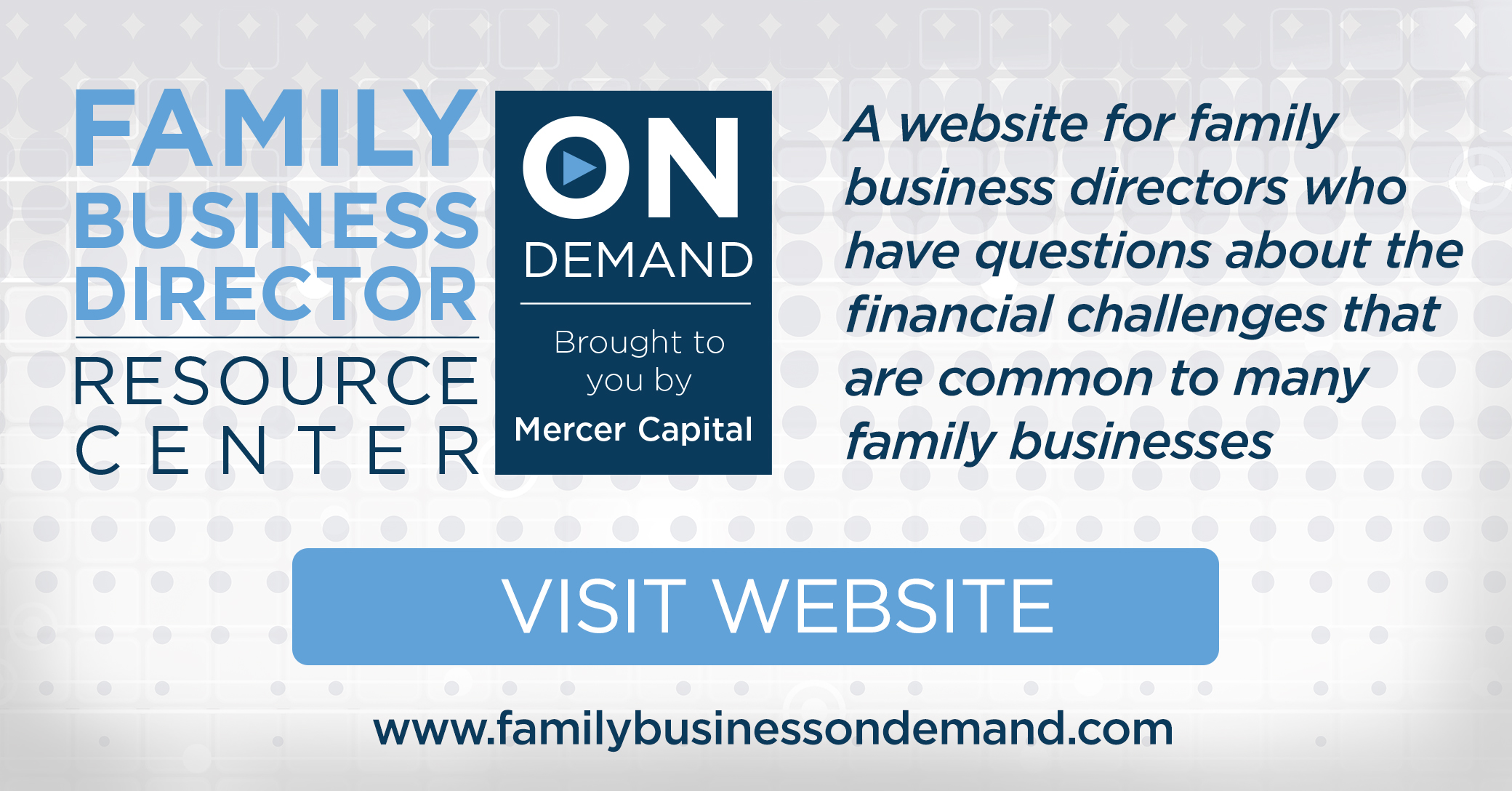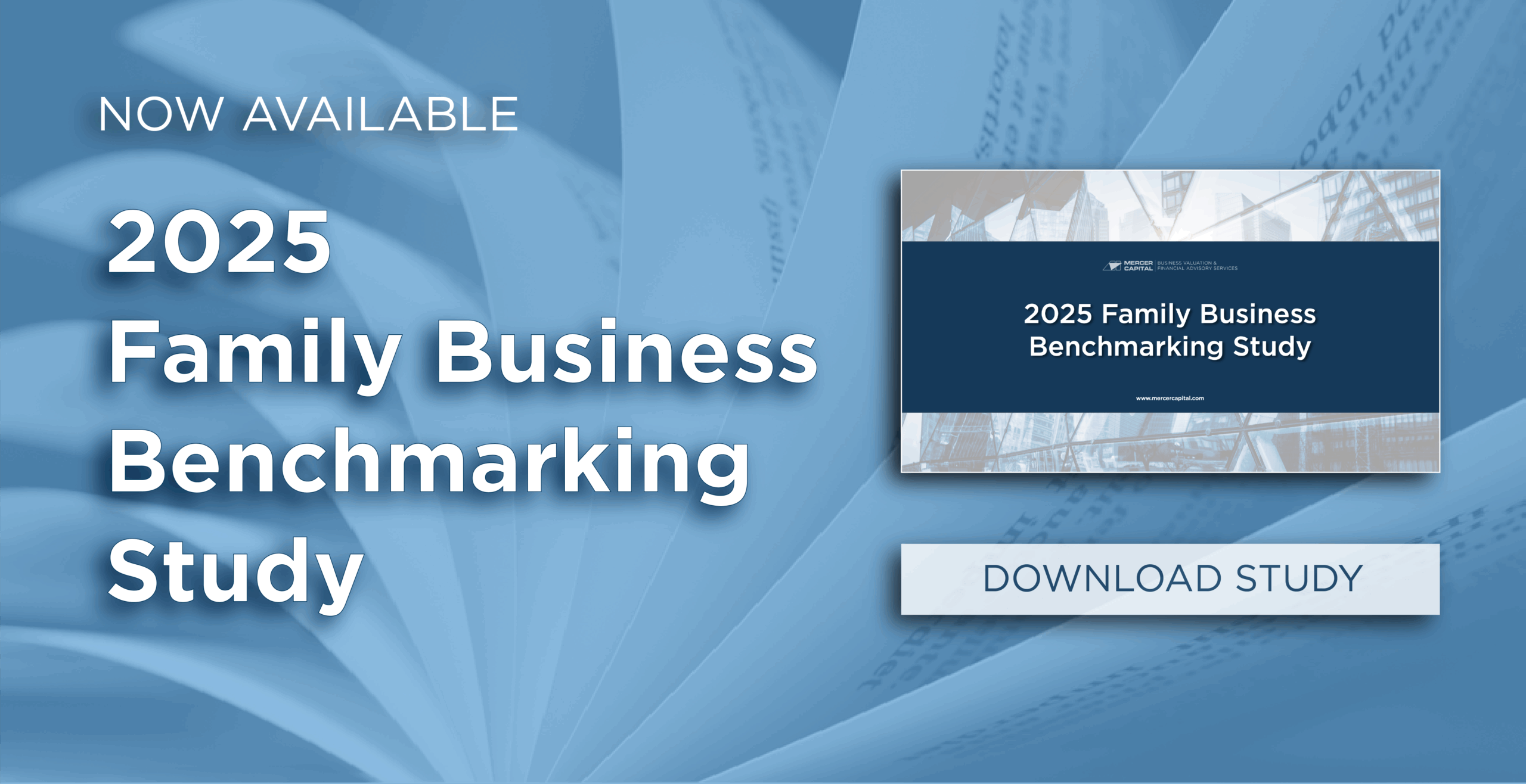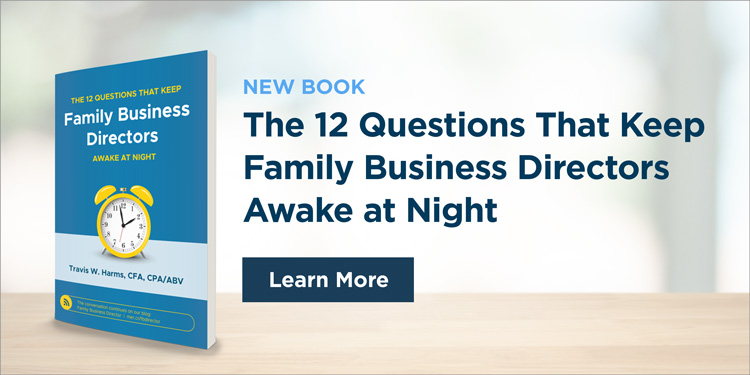Macro-economic volatility has put pressure on compensation programs that depend on accurate goal-setting and stable growth, affecting executive morale and jeopardizing talent retention. Ultimately, the family-owned companies that best weather this uncertainty consider pay adjustments within the broader context of family shareholder and business needs.
Blog
Family Business Director
Corporate Finance & Planning Insights for Multi-Generational Family Businesses
Category
Planning & Strategy
Making it Through December
While its status as a Christmas song is perhaps debatable, Merle Haggard’s “If We Make It Through December” is classic country music at its finest. The song captures the strain of economic hardship, with a recently downsized father lamenting his inability to … Continued
100 Pounds of Popcorn and the Lessons of Family Enterprise
Hazel Krantz’s “100 Pounds of Popcorn” may be a children’s book, but it offers a surprisingly sharp lens on family business dynamics. When three children discover an unexpected windfall, they confront the same challenges real enterprises face: recognizing opportunities, making intentional decisions, managing costs, and navigating differing shareholder priorities. The story is a reminder that clarity, discipline, and alignment matter far more than size or sophistication. Sometimes the best business lessons come from the simplest places.
The Long Run: Gratitude, Trust, and Legacy in Family Business
Thanksgiving traditions like Nashville’s Boulevard Bolt offer a powerful reminder for family business leaders: meaningful progress is always a shared effort. The same sense of community, gratitude, and trust that makes these events successful also strengthens the long-term value of a family enterprise. When leaders acknowledge contributors, foster healthy governance, and build trust across generations, they reinforce the very qualities that drive stability and resilience. This holiday season is an ideal time to reflect on those connections and invest in what truly sustains a family business.
Dividends as Dialogue
Using Policy to Communicate & Align Across Generations
Dividends are about more than distributing profits. They are about distributing confidence that the business is healthy, that management is accountable, and that the true meaning of the family business is being honored.
Insights from Brown Brothers Harriman’s 2025 Private Business Owner Survey
Brown Brothers Harriman’s third annual Private Business Owner Survey offers insights from nearly 500 owners of family and privately held companies. The report provides a revealing look at how these owners approach succession, growth, and shareholder returns. For family business directors, the findings serve as a valuable opportunity to reflect on the governance, planning, and alignment practices that sustain long-term continuity and success.
When Family Mission Meets Family Business
Aligning Purpose and Prosperity
When families articulate a shared mission, they define what truly matters. But in family enterprises, that mission must align with what the business means economically to the family. Whether the business is built for growth, preservation, liquidity, or lifestyle, clarity about its financial role ensures that purpose and prosperity move forward together.
5 Things to Know About Selling Your Business to Private Equity
We recently read a fantastic post on the Altair Advisers’ blog, “Words on Wealth,” by Jason M. Laurie, Managing Director and Chief Investment Officer. The post addresses five things that founders wish someone had told them before selling their businesses to private equity firms. We thank Jason for allowing us to share the post with our readers.
Navigating the Sale of Your Family Business
Lessons from the Auction Block
Selling a family business is both emotional and strategic—much like auctioning a rare treasure. Inspired by Phyllis Kao’s insights at a recent event with Diversified Trust and Sotheby’s, this piece applies four auction principles—provenance, presentation, timing, and the auctioneer—to the sale process. By telling your business’s story, presenting it effectively, and acting at the right market moment with trusted advisors, families can maximize value while honoring their legacy.
Beyond the Balance Sheet: Four Strategic Questions for Family Business Directors
If the income statement is a movie that records how your family business performed during a particular period, the balance sheet is a snapshot that records what your family business looked like at a particular date. The balance sheet answers two core questions: “What are the assets our family business owns?” and “How has our family business paid for those assets?”
We’ll flesh out the first question in this week’s post, and turn our attention to the second question in a subsequent post.
The Family Business Director To-Do List: Shareholder Liquidity
It can be all too easy for family business directors to focus on maximizing performance in the current year for the company. However, it is equally important for directors to not ignore less urgent matters that can undergird the long-term health of the company and the family. In this post, we put together a to-do list that includes important tasks for family business directors to complete whether planning for a one-time share redemption or establishing a family shareholder liquidity program.
Navigating Private Company Valuations
When and Why to Use an Independent Appraiser
Third-party business valuations provide an unbiased, data-driven assessment of a company’s worth, helping owners and directors make informed financial and strategic decisions. By combining structured methodologies with expert judgment, independent appraisals deliver the objectivity needed for transactions, tax planning, disputes, and other critical business events. In this post, we explore why third-party valuations matter and what to expect from the appraisal process.
How to Sell Your Family Business
Selling a business is a three-step process. In reality, each of the phases overlaps to some degree, making the process more of a continuum than a finite set of procedures. A turnkey, orderly process typically requires four to six months. Ultimately, the collective team goal as a family business is to win the race, whether it be at the pace of the hare or the tortoise. In this week’s post, we take a deeper dive into those three phases and what that may look like for you and your family business when the time comes.
Review of Key Economic Indicators for Family Businesses
As we approach the middle of the year, uncertainty in the U.S. economy remains elevated, making this a good time for family businesses to return to the fundamentals and review key macroeconomic indicators from the first quarter of 2025 and into the second quarter. This week’s post provides a brief look at these trends and their implications, as well as some key risks in the U.S. economy to stay aware of through the balance of 2025.
The Quest for Shareholder Alignment
At their best, multi-generation family businesses foster superior outcomes for shareholders, employees, customers, suppliers, and the communities in which they operate. Those are powerful incentives for maintaining family control of businesses across generations and through decades. Yet this remains the exception rather than the rule. Why? Enterprising family businesses that don’t have shareholder alignment around key issues cannot expect to last.
In this week’s post, we identify three principal financial questions around which shareholder alignment is essential for enterprising families.
Value Amidst Uncertainty
How Will Your Family Business Fare If a Recession Sets In?
The uncertain macroeconomic environment is prompting corporate managers to consider how a recession would influence their businesses. So, now is a good time to highlight this theme and for family business directors to consider the same. How will your family business fare if a recession sets in, and how are expectations affecting the value of your family business today? When discussing value, we find it helpful to group expectations into three primary categories: cash flow, risk and return, and growth.
Next Gen Up
The transition to the next generation has been one of the main impediments to family businesses trying to establish a multigenerational enterprise. For many family businesses, this transition can be rocky (and often unsuccessful) due to the next generation’s lack of exposure to the business and last-minute succession planning. As more members of the next generation express interest in the family business, proactive succession planning and next generation engagement will be more important than ever to keep them involved and prepare them for the transition to come.
Capital Budgeting and the Meaning of Your Family Business
As family businesses look into capital projects, they often utilize quantitative corporate finance tools, including net present value analysis, internal rate of return, and other traditional analyses. While these tools are informative when evaluating the feasibility of various capital projects, they are not quite as helpful in determining “what” and “how” to decide for your family business.
Before deciding on a capital project, family business directors must determine if the project is a more suitable use of family capital than alternative projects.
Knowing what your family business means can give you a leg up in evaluating these questions effectively and making the most appropriate capital budgeting decisions for your family business.
The Patience to Prevail, Revisited
This week kicks off a time of economic uncertainty, with global financial markets in turmoil stemming from proposed retaliatory tariffs by the United States on effectively the rest of the world. Simultaneously, golf’s first major of 2025, the Masters, is poised to begin at Augusta National. While the Masters presents a radically different set of challenges from those presented in the Open Championship, the underlying themes and skillsets required to prevail remain the same and are just as applicable to family businesses facing challenges in times of uncertainty. With that in mind, we turn to some key thoughts for family business owners and directors to consider during these tumultuous days.
Crown Castle’s Lessons for Family Businesses
Last week’s news that the publicly traded REIT Crown Castle (ticker: CCI) had agreed to divest its Fiber segment was a bit of a perfect storm of the issues we focus on here at Family Business Director: capital allocation and strategy, return on invested capital, valuation, and dividend policy. After years of underperformance and stagnating dividends, Crown announced a “strategic review” of its fiber business in December 2023, which culminated in Thursday’s announcement that CCI’s fiber segment would be sold to two buyers for an aggregate purchase price of $8.5 billion. In this week’s post, we review how Crown Castle’s divestiture of its Fiber segment highlights the need for an integrated framework for family business directors to evaluate and monitor the key strategic finance decisions that influence family shareholder returns for the years and decades to come.
Why the Value of Your Family Business Matters
In last week’s edition of the Family Business Director, we reviewed six valuation principles for family business directors to keep in mind when developing valuation estimates. As family business directors, it is important to understand not just the “how” of maintaining an accurate estimate of the value of your family business but also the “why.” In this week’s post, we have compiled a list of reasons why it is essential for both family shareholders and family business directors to know what the family business is worth (even if the family has no intention of selling).
The Most Efficient Way to Increase the Value of Your Family Business
In last week’s post, we reviewed what EBITDA is and why not all EBITDA is created equal. In case you missed it, we ended that post with the following statement: “…improving EBITDA margins can have a multiplicative impact on your family business’s value by both providing more EBITDA and justifying a higher multiple.” So, is it really true that a higher EBITDA margin will also bring a higher multiple, or were we just getting carried away with our own thesis? For this week’s post, we pull some market data to test our assertion.
Tariff Talk and Adaptive Forecasting
How Family Business Directors Can Stay Ahead of Unpredictable Times
Over the weekend, President Donald Trump signed an executive order that imposed an additional 25% tariff on Canadian and Mexican imports and an additional 10% tariff on imports from China. As the socio-political atmosphere is continuously changing, it is critical for family business directors to keep a pulse on current developments and understand the different implications that may impact or change their industry moving forward. Maintaining an adaptive forecast is one of the best practices for being able to pivot during unpredictable times. As family business managers and directors re-evaluate their projections, we revisit some of the mental biases that can potentially skew forecasts.
A New Approach for Business Succession Planning
Family Business Director attended the 59th Annual Heckerling Institute on Estate Planning earlier this month. In one of the standout sessions, we reviewed purpose trusts and how companies like Patagonia are employing them for succession planning. Even if your family business is unlikely to follow suit, Patagonia’s novel business succession strategy provides important lessons and reminders for family directors. Your family business may not have a purpose as lofty as “protecting the planet,” but you and your shareholders will benefit if the purpose is clearly articulated, protected by thoughtful governance structures, and visible through disciplined and transparent reporting.













